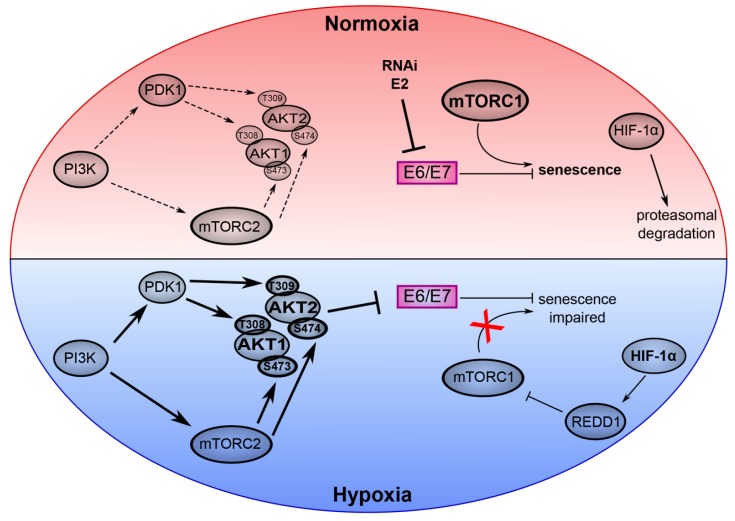Figure 2.
Key role of the PI3K/AKT/mTOR network in the virus/host cell crosstalk in HPV-positive cancer cells under normoxia and hypoxia. The upper part of the model (red) depicts normoxic HPV-positive cancer cells. Here, experimental inhibition of E6/E7 expression by RNA interference (RNAi) or expression of HPV E2 efficiently induces senescence dependent on active mTORC1 signaling. HIF-1α is degraded by the proteasome. The lower part of the model (blue) represents hypoxic HPV-positive cancer cells. Phosphorylation of AKT1 and AKT2 is induced by their canonical upstream regulators PI3K, mTORC2 and PDK1. Hypoxic activation of AKT mediates repression of E6/E7. Hypoxia also leads to the stabilization of HIF-1α, which activates REDD1 and results in the inhibition of mTORC1. Thus, despite the AKT-mediated inhibition of E6/E7, hypoxic HPV-positive cancer cells evade senescence due to impaired mTORC1 signaling. Arrows indicate an activation, bar-headed lines indicate an inhibition. (Copyright © American Society for Microbiology, (mBIO, 10(1), e02323–e02318, 2019 [25]).

